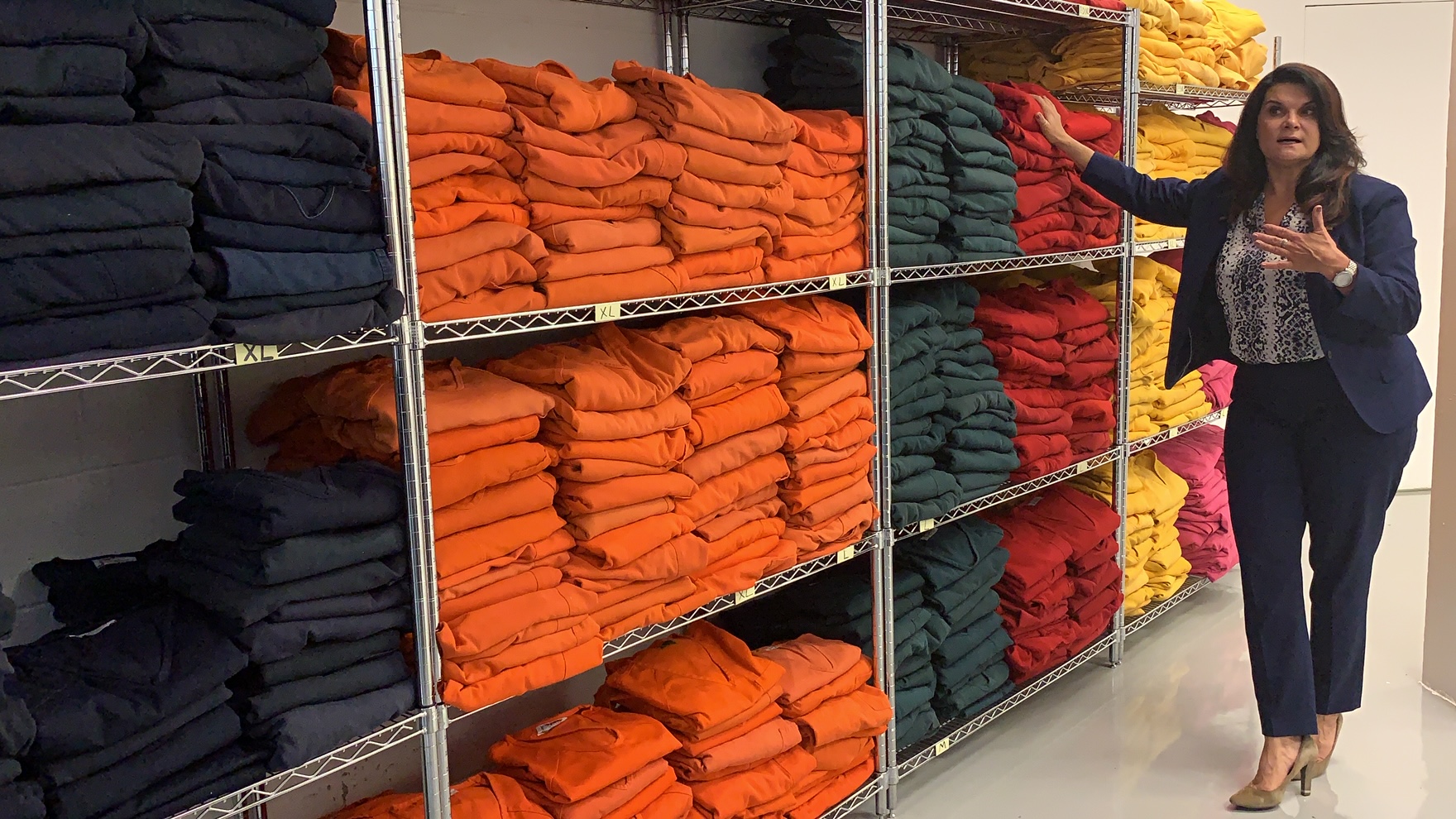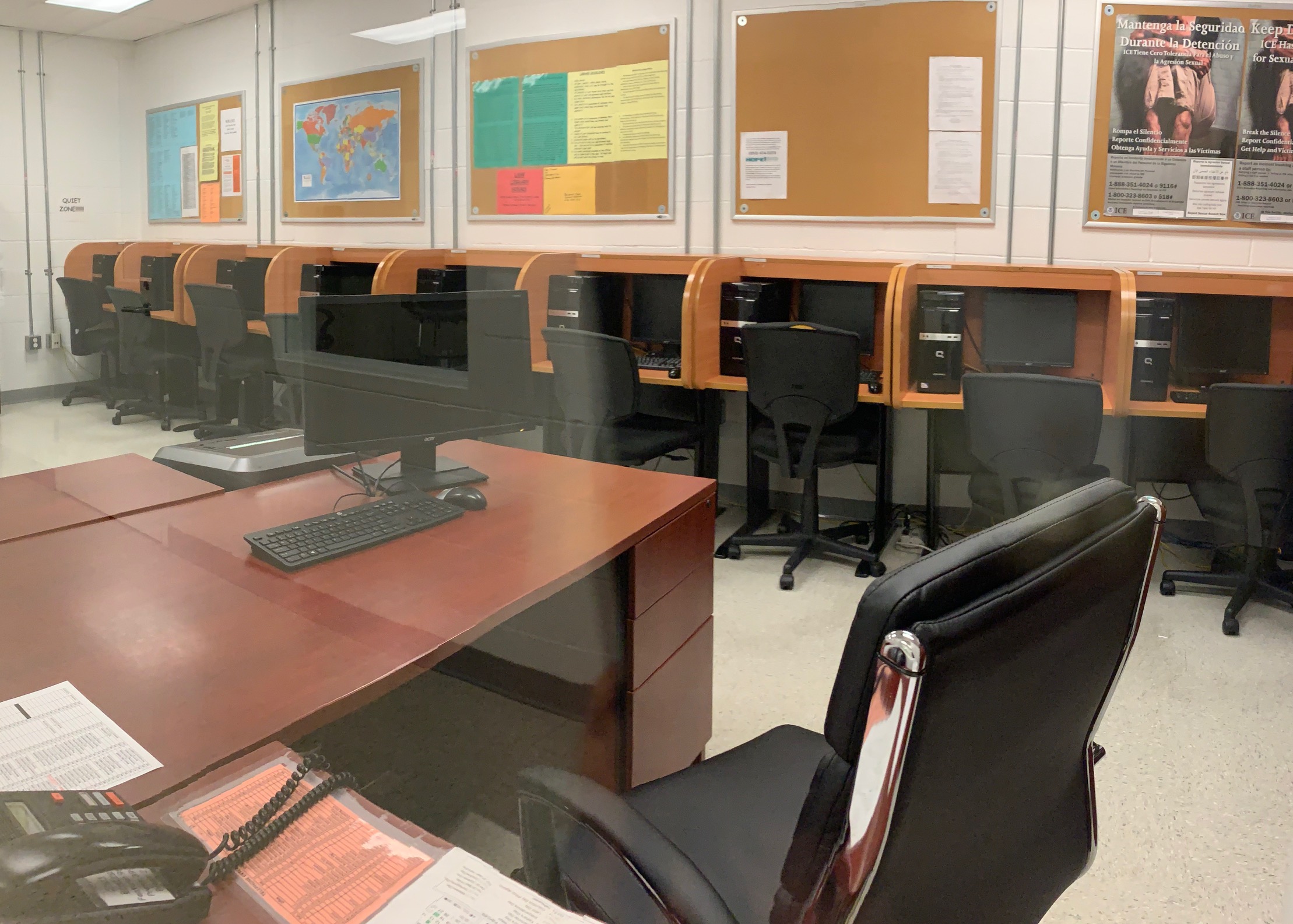TACOMA, Washington — The spread of bad information is what “fueled” a self-declared antifa supporter’s shooting rampage and arson attempt at a federal immigration detention facility here this summer, according to the U.S. Immigration and Customs Enforcement official who runs the center.
In the two months since the incident, the political climate has not cooled. Employees who work at the privately-run Northwest ICE Processing Center, maintained by the private sector GEO Group, have received threatening postcards in the mail.
The facility’s new director, Nathalie Asher, says she decided to break with protocol to show the public the facility in order to address a range of criticisms against it and demonstrate immigrants are not being held in “concentration camps,” as one Democratic lawmaker stated in June.
Last month, immigrant advocates submitted a first-of-its-kind class action lawsuit over the mistreatment of 15 detainees in ICE custody, though not at this location. A detainee in Tacoma committed suicide last November shortly after being taken off suicide watch.
Outside groups say immigrant detainees at Customs and Border Protection’s facilities, which are separate from ICE detention centers, have been subjected to overcrowding in cells and have been held outside in extreme heat for days.
A Department of Homeland Security inspector general report from June detailing conditions at four ICE facilities as of 2018 found unsanitary bathroom and kitchen conditions. ICE said in a statement it “takes seriously” the official’s findings and agreed to conduct a “full and immediate review” of those facilities. These did not include the Tacoma detention center that ICE decided to open up to reporters.
“Look for yourself, the treatment is humane here. These individuals have hygiene provided to them, they are safe as they await their immigration proceedings,” Asher told reporters in Tacoma.
Asher is in her fifth week on the job following a stint at ICE headquarters in Washington, D.C. She says one of her first orders of business after taking over was to set up a media walkthrough.
ICE uses 10 other contract detention facilities such as this one, as well as government-owned centers, local government facilities such as jails and prisons, and family centers to hold people.
This center only houses adults. Unlike Border Patrol stations on the U.S.-Mexico border, which were severely overcrowded this spring due to higher migrant apprehension rates than facilities could hold, ICE is in a position to deny incoming transfers. The pandemonium seen on the border is not like the order and quiet seen at this Tacoma facility, even with 1,323 people in the building.
“The fact that we can maintain order, cleanliness, humane care, and medical care … when we are dealing with individuals from some 65 nationalities, in my view, is quite remarkable,” she says.
Tacoma, one of the largest ICE detention centers in the nation, is 250 people under its 1,575 capacity. Roughly 80% are men and 20% are women. About 30% are Mexicans, followed by migrants from India, whose citizens make up 11% of detainees on an average day. A total of 60% are Spanish speakers.

Nearly two-thirds of all detainees here were flown in after being arrested by Border Patrol for illegally crossing the southwest border. Some adults have claimed asylum, while others have been deemed ineligible.
The remainder of detainees were arrested locally by ICE, which is forced to do the job because “sanctuary” policies in the area forbid local law enforcement from holding an illegal immigrant so they can be turned over to ICE to face deportation.

Asher walked down a long hallway to the location used for intake. Arrivals are brought into the large room lined with cells that temporarily hold them while officers look into whether they have a criminal history and gang affiliation to determine the appropriate living space.

They are given color-specific scrubs based on criminal history, as well as personal toiletries, shoes, socks, towels, blankets, T-shirts, shorts, sweatshirts, and other items.

Medical staff in an adjacent office are supposed to screen every arrival within 12 hours for illnesses, including tuberculosis. A more thorough mental health, medical, and dental review is done within 14 days, though it is voluntary. The medical office looks like a large urgent care center with exam rooms, a front desk, and operating room.
This side of the facility provides services while the other holds living quarters, which are two-floor, open-concept bays capable of holding 64 people. Showers, toilets, and sinks line one side of the L-shaped room, while bunks line the other.

The first floor has 10 tables, at which detainees can sit at to eat three delivered daily meals. The room has two microwaves, a wall of pay phones, and direct outdoor access. Phone numbers for free calls to consulates and nongovernmental organizations are posted on the walls.

Detainees can meet with approved outside visitors on one of two days each week and may walk around the building at certain times, but they must have a destination, such as legal services or the pharmacy. A few dozen men were walking about on the day the Washington Examiner visited, some with escorts and some on their own.
Detainees can inform the kitchen of dietary preferences, including Kosher and Halal, or if they need to eat outside normal mealtime hours for religious purposes, including Ramadan.
Asher said detainees are given up to 3,000 calories in food per day, asserting that on “several” occasions she has seen people unable to fit into the clothes they arrived in when they are released from custody.
Cam Coval, whose organization helps detainees find legal representation, said that is not the case.
“The food they are giving them isn’t sufficient. They’re starving,” Coval, executive director for Portland, Oregon-based Pueblo Unido, said.
Coval’s organization was among a couple that reached out to Oregon and Washington state lawmakers about alleged neglect 18 detainees told advocates they experienced, including “being handcuffed and forced to sleep naked without blankets overnight” and “being retaliated against for hunger striking while detained in NWDC in Tacoma,” he detailed in a follow-up email. Coval did not provide names of detainees.
Detainees may volunteer for work, according to Asher, who said the kitchen is the most popular spot because workers get an extra portion of food.
The state of Washington in 2017 sued the facility operator, which made $70 million at this one location in 2015, for not paying detainees for hours worked in the kitchen, laundry room, and for cleaning the facility. Today, Asher defends the work program and said it is not “forced labor.” But she did not comment more due to the lawsuit.
Every person in the facility will go before a federal immigration judge to have their case decided. The facility has three judges on-site and a mini courtroom where cases are heard. It also uses two video teleconference rooms to hold electronic hearings before two judges located outside Tacoma.
Detainees, who stay an average of 70 days, can attend daily on-site briefings by NGOs about legal representation.

“Ordinarily, this is not the way we would be working with media,” said Asher, who worked here as a supervisor in 2005 and now oversees nearly 220 ICE personnel as field office director for Washington state, Oregon, and Alaska. “There is a lot of misinformation out there.”

